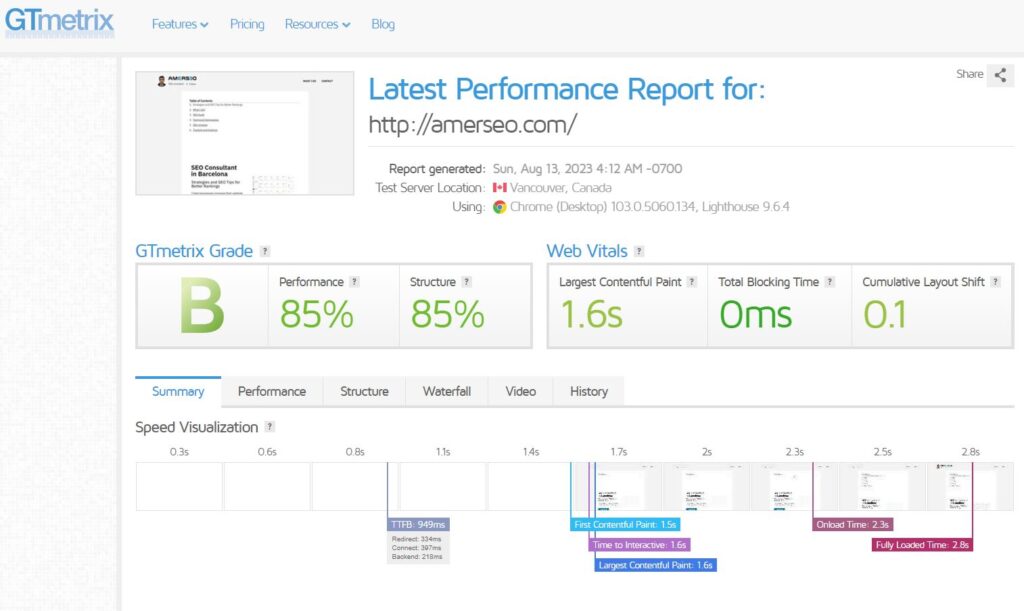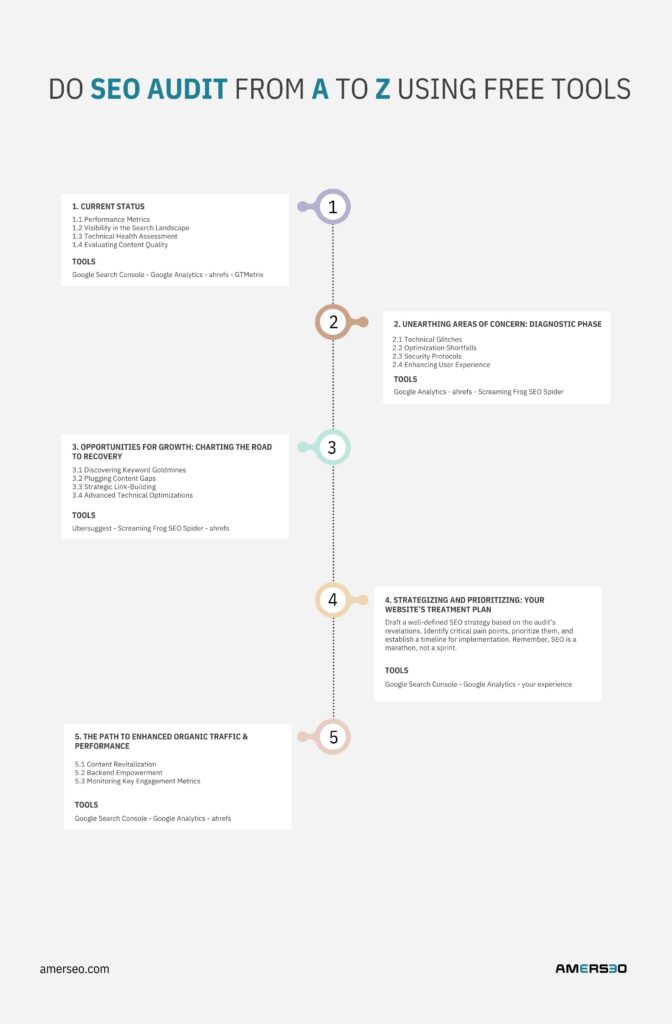An SEO audit is as important as a regular health check for our body. Just as you wouldn't overlook a persistent cough, ignoring signs of a website with issues can be harmful.
Let's embark on this diagnostic journey to understand the importance of an SEO audit.
1. Current State: Taking the pulse of the website
1.1 Performance Metrics
Dive into site speed, uptime, and server response times to ensure your website responds quickly and reliably to user requests.
I believe GTmetrix is the best tool to check your performance (more tools listed below).

1.2 Visibility in the search landscape
Discover your website's current position in search results, identifying the main keywords driving traffic and areas of untapped potential.
1.3 Technical Health Evaluation
Audit broken links, non-working redirects, or code errors that may hinder smooth user interaction.

1.4 Content Quality Evaluation
Examine your site's content for originality, relevance, depth, and alignment with audience needs and search engine guidelines.
For this, you can use the following tools:

2. Discovery of Areas of Concern: The Diagnostic Phase
2.1 Technical Failures
Identify obstacles like broken links, missing pages, or slow-loading elements that may affect user experience and indexing by search engines.
2.2 Optimization Deficiencies
Detect areas where meta tags are missing, images are too heavy, or content doesn't effectively focus on keywords.
2.3 Security Protocols
Ensure your website is protected against potential threats, vulnerabilities, or malware that could compromise user trust and data.
2.4 Improving User Experience
Evaluate navigation intuitiveness, adaptability to different devices, and overall clarity to optimize user satisfaction to the fullest.
For this, you can use the following tools:
- Google Search Console
- Google Analytics
- GTmetrix
- ahrefs
- Ubersuggest
- Broken Link Checker
- Screaming Frog SEO Spider
3. Growth Opportunities: Mapping the Path to Recovery
3.1 Discovering Goldmine Keywords
Take advantage of new or semantically related keywords to expand your website's reach and potential audience.
3.2 Covering Content Gaps
By comparing with your competitors, identify niches or topics you may have overlooked, thus adding more value and breadth to your site.
3.3 Strategic Link Building
Identify high-authority domains in your niche that can amplify your site's credibility through backlinks.
3.4 Advanced Technical Optimization
Improve loading speed, apply structured data, and ensure mobile compatibility to provide a top-notch user experience and earn favor with search engines.
For this, you can use the following tools:
- Google Search Console
- Google Analytics
- ahrefs
- Ubersuggest
- Screaming Frog SEO Spider
4. Strategy and Prioritization: The Treatment Plan for Your Website
Develop a well-defined SEO strategy based on the findings of the audit. Identify critical points, prioritize them, and establish a schedule for implementation. Remember, SEO is a marathon, not a sprint.
5. The path to increased organic traffic and performance
5.1 Content revitalization
With the knowledge acquired, refine and create content that balances user needs and search engine requirements.
5.2 Backend strengthening
Strengthen the technical structure of your website, ensuring it complements and enhances your frontend initiatives.
5.3 Monitoring key interaction metrics
Careful monitoring of metrics such as bounce rate, session duration, and pages per session will ensure continuous optimization, adapting to user behavior and search engine algorithms.


